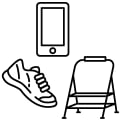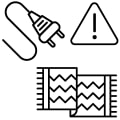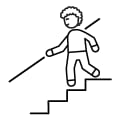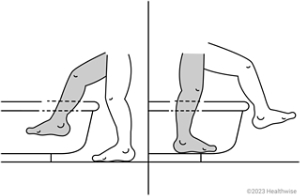Diabetes and Preventing Falls: Care Instructions
Problems from diabetes—such as nerve damage, foot problems, and reduced vision—may increase your risk of a fall. So can some medicines. Keeping your blood sugar near your target level can help prevent falls. You also can exercise to improve strength and balance and can arrange your home to be safer.
Visit the Alberta Healthy Living Program. They offer free programs and services, including exercise and nutrition support, for people managing chronic conditions like diabetes.

Practice fall safety and prevention.
- Wear low-heeled shoes that fit well and give your feet good support. Talk to your doctor if you have foot problems that make this hard.
- Carry a cellphone or wear a medical alert device that you can use to call for help.
- Use stepladders instead of chairs to reach high objects. Don't climb if you're at risk for falls. Ask for help, if needed.
- Wear the correct eyeglasses, if you need them.

Make your home safer.
- Remove rugs, cords, clutter, and furniture from walkways.
- Keep your house well lit. Use night-lights in hallways and bathrooms.
- Install and use sturdy handrails on stairways.
- Wear non-skid footwear, even inside. Don't walk barefoot or in socks without shoes.

Be safe outside.
- Use handrails, curb cuts, and ramps whenever possible.
- Keep your hands free by using a shoulder bag or backpack.
- Try to walk in well-lit areas. Watch out for uneven ground, changes in pavement, and debris.
- Be careful in the winter. Walk on the grass or gravel when sidewalks are slippery. Use de-icer on steps and walkways. Add non-slip devices to shoes.

Put grab bars and non-skid mats in your shower or tub and near the toilet. Try to use a shower chair or bath bench when bathing.

Get into a tub or shower by putting in your weaker leg first. Get out with your strong side first. Have a phone or medical alert device in the bathroom with you.
Where can you learn more?
Go to https://www.healthwise.net/patientEd
Enter X601 in the search box to learn more about "Diabetes and Preventing Falls: Care Instructions".
Adaptation Date: 12/06/2024
Adapted By: Alberta Health Services
Adaptation Reviewed By: Alberta Health Services
